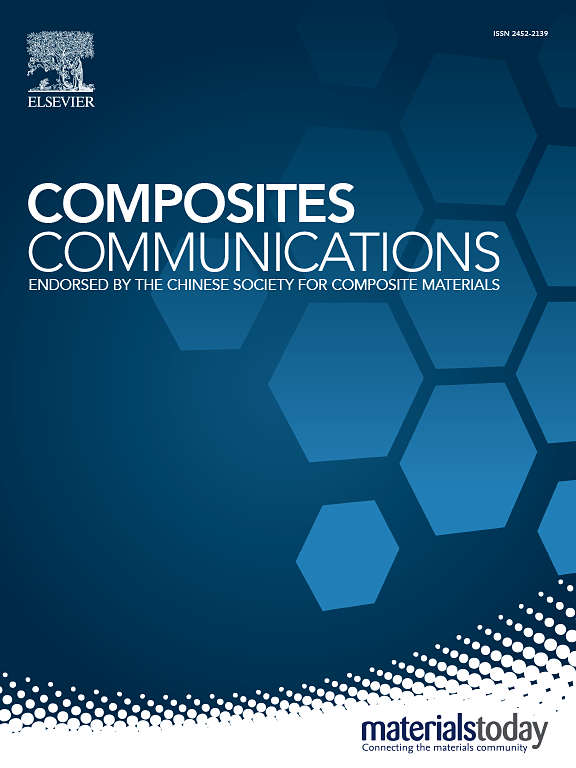Synergistic dual effect dynamic network regulation of self-healing silicone rubber composites for outdoor insulation
IF 7.7
2区 材料科学
Q1 MATERIALS SCIENCE, COMPOSITES
引用次数: 0
Abstract
Silicone rubber (SR) is an important insulating material in electrical and electronic equipment and self-healing SR can heal electrical/mechanical damage to enhance the service life of the material. However, commercial silicone rubbers contain high content inorganic fillers and irreversible permanent cross-linked networks, creating a great challenge for the research of their self-healing ability. Herein, a novel PDMS-based silicone rubber containing disulfide and hydrogen bonds (PSH) is designed by introducing dynamic reversible hydrogen to construct a synergistic dynamic cross-linked network. The interactions and reversible cleavage-recombination between dynamic hydrogen and disulfide bonds endow the PSH elastomers with excellent mechanical and self-healing ability. Therefore, the tensile strength of the optimal PSH8 elastomer reaches 1.82 MPa, which exceeds that of the original SR. Meanwhile, the mechanical and electrical damage self-healing efficacy of PSH8 elastomer can achieve 91 % and 67 %, respectively. It provides a feasible approach for the commercialization of self-healing SR, which is beneficial for the application in advanced electrical equipment.

自愈硅橡胶室外保温复合材料协同双效应动态网络调控
硅橡胶(SR)是电气和电子设备中重要的绝缘材料,具有自修复功能,可以修复电气/机械损伤,提高材料的使用寿命。然而,商用硅橡胶中含有高含量的无机填料和不可逆的永久交联网络,这给其自愈能力的研究带来了很大的挑战。本文通过引入动态可逆氢,设计了一种新型的含二硫氢键(PSH)的pdm基硅橡胶,构建了一个协同的动态交联网络。动态氢键和二硫键之间的相互作用和可逆的裂解-重组使PSH弹性体具有优异的力学和自愈能力。因此,最优PSH8弹性体的抗拉强度达到1.82 MPa,超过了原sr,同时PSH8弹性体的机械损伤自愈率和电气损伤自愈率分别达到91%和67%。这为自愈SR的商业化提供了一条可行的途径,有利于其在先进电气设备上的应用。
本文章由计算机程序翻译,如有差异,请以英文原文为准。
求助全文
约1分钟内获得全文
求助全文
来源期刊

Composites Communications
Materials Science-Ceramics and Composites
CiteScore
12.10
自引率
10.00%
发文量
340
审稿时长
36 days
期刊介绍:
Composites Communications (Compos. Commun.) is a peer-reviewed journal publishing short communications and letters on the latest advances in composites science and technology. With a rapid review and publication process, its goal is to disseminate new knowledge promptly within the composites community. The journal welcomes manuscripts presenting creative concepts and new findings in design, state-of-the-art approaches in processing, synthesis, characterization, and mechanics modeling. In addition to traditional fiber-/particulate-reinforced engineering composites, it encourages submissions on composites with exceptional physical, mechanical, and fracture properties, as well as those with unique functions and significant application potential. This includes biomimetic and bio-inspired composites for biomedical applications, functional nano-composites for thermal management and energy applications, and composites designed for extreme service environments.
 求助内容:
求助内容: 应助结果提醒方式:
应助结果提醒方式:


